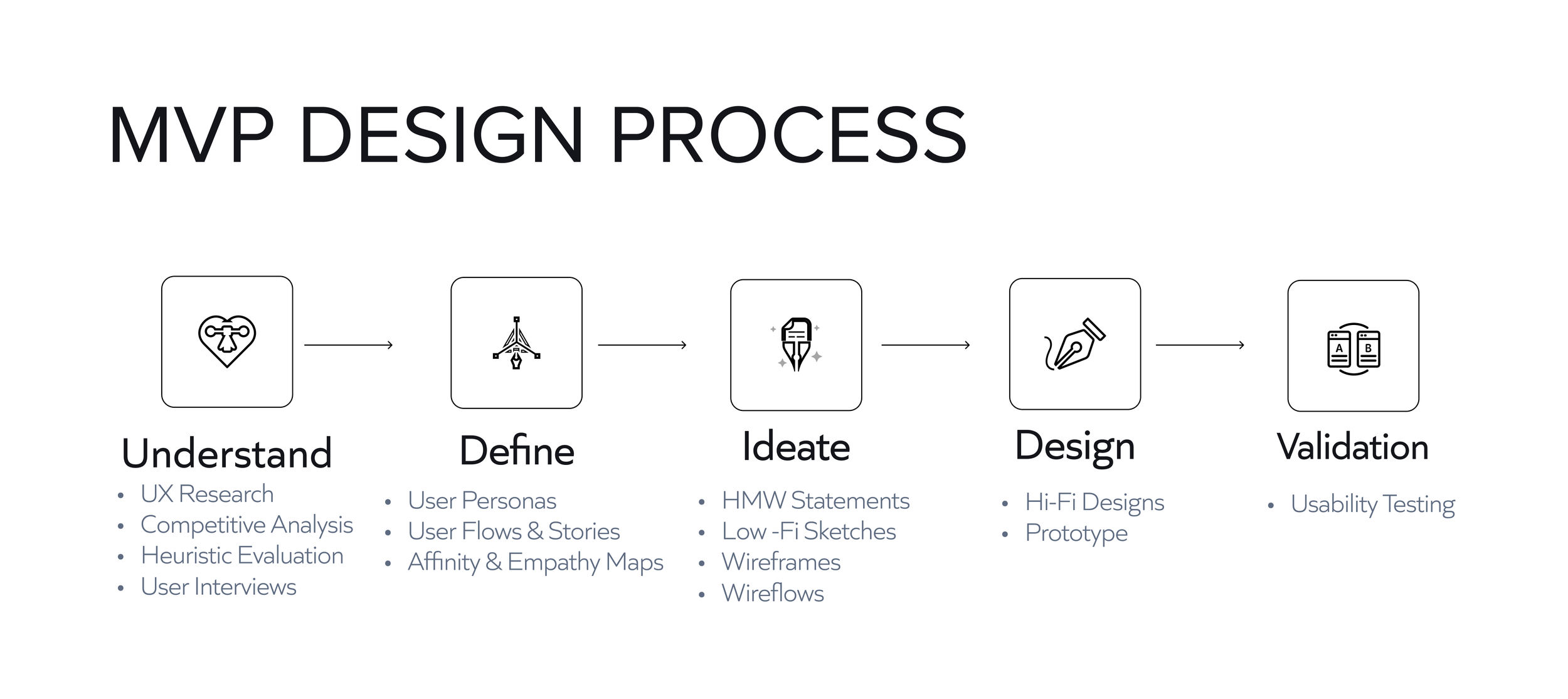SUPPORTNEST
Mobile App
OVERVIEW
💡 THE SOLUTION
Through the SupportNest app, users will access education, step-by-step recommendations, and professional support on-demand.
SupportNest will help users navigate the transition into motherhood, heal from pregnancy and birth, & leave the postpartum time feeling well, rather than exhausted, depleted, and depressed.
THE USERS
Postpartum mothers
Spouses/partners & caregiving family members
Care providers (OBs and Midwives)
CONTEXT OF USE
Apps and websites that offer this type of support are used in personal environments mostly– homes, hospitals and birthing centers.
MY TOOLBOX
Figma
Photoshop & Illustrator
Paper, pen & post-it notes
🤔 THE PROBLEM
After giving birth, women lack support, knowledge, and tools to navigate this new phase and feel overwhelmed with the around-the-clock needs of a new baby while lacking sleep and needing healing and mental/emotional support.
Providers don’t have time or resources to offer everything they need.
PROJECT CONTEXT
Because of my 15+ years in women’s healthcare, I’m familiar with this exact problem space and I’ve been working to close this care gap through education and clinical support.
SECONDARY RESEARCH
GOALS:
Understand if this is a problem with a sizeable audience - validate the idea or discover if a shift needs to be made.
Get an idea of what specific problems users want to solve.
Discover who the top companies in this space are. What are they doing to solve these problems for users already?
Understand where the gaps in the support are, in the current offerings.
THE EXPERT PERSPECTIVES
Cohort studies
Medical research
THE TOP COMPETITORS
Expectful
Baby2Body
Back to You
Indirect competitors that focus on specific features such as mental health and exercise - Better Help,
HEURISTIC EVALUATION
Top competitors were compared to learn more about the features to initially include or avoid.
I worked with these three Nielsen Norman Usability Heuristics for User Interface Design:
Aesthetic & Minimalist Design
Match Between the System & the Real World
Recognition Rather Than Recall
Competitors wer rated on a scale of 1 to 5:
Excellent - 5 points
Very Good - 4 points
Average - 3 points
Below Average - 2 points
Poor/non functional - 0 or 1 points
EVALUATION RESULTS
EXPECTFUL
RESEARCH
BACK TO YOU
BABY 2 BODY
WHAT’S WORKING, WHAT’S NOT?
What these 3 apps had in common:
Attempt to cover the whole perinatal timeframe - from pre-conception through pregnancy and postpartum
Focus on a specific problem area, while only lightly covering other areas of postpartum need
None offer a connection to professional support (Baby2Body offers A.I. support)
None offer a specific healing pathway
None offer a parent community
OUTCOME - WHAT I LEARNED
This is a growing category with strong competition - proving the solution is wanted and needed.
Medical research shows that women don’t receive the support they need postpartum, and they enter into the next phase of parenting exhausted.
Health problems are caused or exacerbated by inadequate support, and insufficient rest during this vulnerable time.
When the postpartum period is over (around 12 months postpartum), children begin to walk and require more focus/energy from their mother, so if she’s already exhausted, overwhelmed, and unwell, this can set up a lifetime of compounding issues for families.
INSIGHTS & OPPORTUNITIES
What I wanted to include in the SupportNest MVP based on research + my professional & personal experience:
Day by day How-Tos for healing
What to eat - based on days and weeks postpartum
Medicinal/nutraceutical supports
Mental/emotional support at a high level so that women experiencing postpartum depression and postpartum psychosis can be identified early and supported
Lactation support
Access to live expert support - via video, text, and audio
Articles, videos & audio by experts and mothers who share their experience
Direct link to product recommendations
REMAINING QUESTIONS - problem, audience, competitors
Do I want to connect the app to regional / local suppliers of meals?
Do we want to connet to local care options such as PP doulas, MDS, Lactation Consultants, massage therapists, etc?
Direct booking through the app and there could be a referral or membership fees?
PRIMARY RESEARCH
THE RESEARCH PLAN
The objective is to discover:
Which categories of support women are seeking in postpartum
How women prefer their support to be delivered
Which specific problems postpartum women want and need to solve
Research Questions
Which problems do you want solved?
What types of support are you seeking?
Which websites/platforms have you used for postpartum support? What did you find useful? What did you dislike or find confusing?
How do/did you feel about pricing?
Methodology
All user interviews were conducted via Zoom.
Participant Characteristics
Women who have had babies and/or are currently pregnant and interested in receiving online support
Postpartum professionals (midwives, doulas, doctors, etc)
Recruitment
Participants were contacted via social media and email. A screener survey was sent to the top 25 candidates. Interviews were scheduled via Zoom.
THE SCREENER
Several screener questions uncovered valuable data - below is a summary of the most valuable data.
DEMOGRAPHICS of Survey Respondents
USER INTERVIEWS
I interviewed 4 women, all postpartum, including two professionals
(2 of the women were professionals and also have children)
Interview Questions
[click image to view the interview questions]
ANALYZING THE DATA
AFFINITY MAP
“1:1 app support is more comforting due to
desirable distance”“I did the sleep support in the app”
“Make it simple - they would open up their app and see
very encouraging things where it’s easy”
EMPATHY MAPS
“I need help”
“I don’t know what to do to get help”
“Often people need encouragement”
PERSONAS
Out of my research, 3 personas emerged that describe the users.
[click to view the full image]
click image to view full size
click image to view full size
USER STORIES
User stories naturally grew from the findings in the affinity and empathy mapping exercise and helped in visualizing the specific steps a user would take based on their needs.
[click to view the full image]
HOW MIGHT WE with SOLUTION IDEATION
HMW support mothers from home?
Give them experts on demand
Send helpers into their homes
Ship / mail / delivery of items that will support them, make things easier
Listen to them - they need to feel heard in many different ways
Feed them - home support w/ cooks, doulas, send them supplements, broths, drink mixes, meal shake mixes - things that are delicious and support them w/ their primary goals easily
24/7 access to support - immediate access to bot - transfer to expert
Nudging before they ask - check-ins - creating connections
Affirmation upon load - ask them how they’re doing, and make it easy to answer
HMW connect mothers to the community & professional support they need?
In-person or virtual circles - can be on a schedule (facilitated) or drop-in anytime (unfacilitated)
Board/feeds where people express their feelings
Pair up mothers as support partners to each other
Facilitated small group coaching with experts - 4 or 6-week rotations
On-demand support from professionals in a way that works for them
HMW help mothers to get better sleep and rest?
Sleep and relaxation meditations and practices
Hypnosis
Sleep hygiene
Strategies for getting baby to sleep
Foods and herbs for sleep - provide supplement lists, recipes, mini classes / videos
Exercises for before sleep (bedtime yoga, etc)
Music and stories for sleep - play on-demand anytime - tailored to parent or tailored to baby or older child that might be co-sleeping
Check in - AM how are you feeling? Way to gauge sleep quality without using sleep trackers
HMW empower mothers to support themselves and their babies when health challenges arise?
Get immediate feedback from professionals ( via text voice message Etc )
Concierge - for appointments, site/app navigation, connection to professionals
Q&A feed ask Professionals in a chat area
Ability to schedule virtual appointments
IDEATION & DESIGN
INFORMATION ARCHITECTURE
SupportNest app map
This layout shows the original ideas for how users would begin their interactions with the app, and defining the places users can go from the home screen - how will they get there?
SKETCHES - LIGHTWEIGHT PROTOTYPES
User red routes were sketched out
[click to view larger images]
WIREFRAMES & WIREFLOWS
In this stage I zeroed in on the actual screens and how they will flow together in the final app - this got me much closer to seeing how everything will come together!
[click to view the full image]
SupportNest Red Routes
Most critical flows for the MVP.
1. Login or sign up to access subscriber content.
2. Access Professional help.
[click to view larger images]
The ideas behind color, typography, and shape choices– the app should feel uplifting and lively, while still feeling simple enough for information and support to stay front-and-center.
[click image to zoom in]
STYLE GUIDE
HI FIDELITY MOCKUPS
VALIDATION
USABILITY TESTING
For the SupportNest usability tests, I Interviewed three people that fit into the app's target demographics: a "Genesee", an "Geneva", and a "Geraldine.”
Each interview lasted 30-40 minutes and all were done remotely with the users interacting with a prototype on their phones, to make the context feel as close to “real-world” as possible. I was on Zoom with them in order to interact with them / view their reactions, and also to assist if they got stuck at any point.
I used the concurrent think-aloud method to get their thoughts on every step along the way and got some extremely valuable feedback.
TASKS
Follow the onboarding flow and give feedback.
Set up an account, Become a subscriber/member.
Go to Home. Talk through what’s there, how you feel about it, what catches your attention / what interests you?
From Home - How will you get personalized recommendations?
Now we’re on the tailored member home screen - get some Nourishment recommendations for yourself.
From the Nourishment page, how would you look at a recipe?
Book an appointment with a professional for a mental / emotional health session.
It is now time for your appointment - Enter your support session, initiate a video call, and then end the call.
Go to Support - how will you view the community?
Head back Home to finish the session.
LEARNINGS & WHAT’S NEXT?
After having conducted two rounds of usability tests, I’ve found all of the major and minor usability issues and it’s time to build out every area of the app.
The next step will be to connect a professional network of practitioners to the app to deliver the biggest promise - on-demand support.
Third-round usability testing can then commence
Finally, I aim to get grants and investments to develop this app and bring it to market.
Thank you for taking the time to view the in-depth process of this project!
Please get in touch if you have any questions.

















